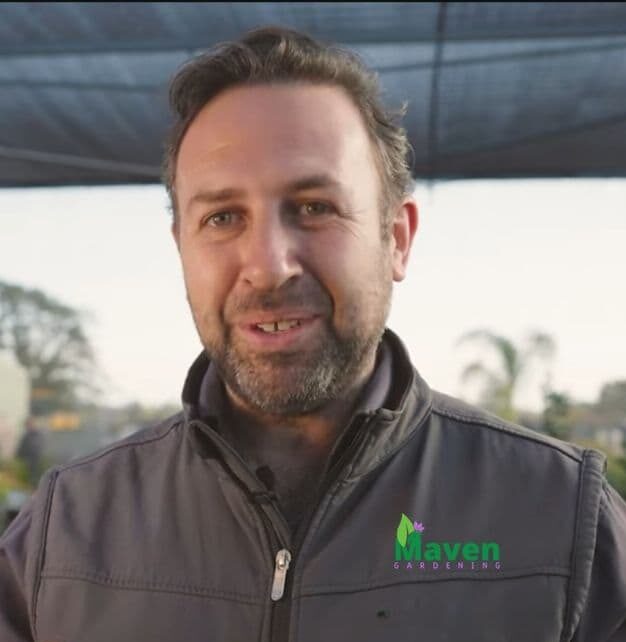Hydroponic Gardening Unveiled: Grow Lush Gardens Indoors with Ease!
Hey, and welcome to hydroponic cultivation’s captivating adventure. This method replaces soil with nutrient-rich water solutions to grow plants. Hydroponic gardening is more than just a method; it’s a way to produce food sustainably, efficiently, and with high- yields. It’s suitable for both novice and experienced farmers.
Let’s look at what makes hydroponic gardening unique and why it’s essential in today’s growing world.
Defining Hydroponic Gardening and Its Significance
Hydroponic gardening uses mineral nutrient solutions in an aqueous solvent to grow plants without dirt. With this method, plants can get a balanced diet of nutrients delivered straight to their roots in a more accessible form to absorb. In addition to working well and lasting for a long time, hydroponic farming has several advantages. It uses up to 90% less water than standard-soil gardening. It reduces pesticide use and makes high-density planting possible, which is huge for growing food in cities or places with poor soil quality.
Benefits of Hydroponic Systems Over Traditional Soil Gardening
Hydroponic systems offer several advantages over conventional soil-based gardening:
Water and Nutrient Efficiency: Hydroponics recycles nutrient solutions and uses water more efficiently. It also significantly reduces waste.
Faster Plant Growth: With direct nutrients to the roots, hydroponically grown plants grow faster and produce more.
Space Economy: Hydroponic systems can be installed in compact areas, making them suitable for growing in cities or indoors.
Gardening All Year: Controlled indoor conditions mean you can grow fresh produce throughout the year, regardless of the outside weather.
Reduced Pests and Diseases: Hydroponic gardens require fewer pesticides since there is no soil to harbor pests and diseases.
Overview of Hydroponic Gardening Essentials
Hydroponic gardening begins with an understanding of the basics. The process includes:
Understanding the Basics: To be successful at farming, you must know how hydroponic systems work.
Selecting the Right Plants: Water-based gardens are suitable for some plants but not others. It can help to know which ones to pick.
Know About Nutrients: Plants need the right mix of nutrients to be healthy and produce lots of food.
Choosing the Ideal System: Different hydroponic systems exist for different situations, purposes, and skill levels.
Hydroponic Gardening Basics
Hydroponic gardening grows plants in a nutrient-rich water solution instead of dirt. This farm begins with an understanding of this idea.
Fundamental Concepts of Hydroponic Gardening
Hydroponic gardening has several main parts:
Nutrient Solution: A water-based solution that provides nutrients plants need to grow.
Growing Medium: helps plants absorb nutrients and support roots. Rockwool, clay pellets, and perlite are some examples.
System Types: Hydroponic growers can choose from several methods, each with pros and cons. These methods vary, ranging from straightforward wick systems to more intricate setups such as NFT (Nutrient Film Technique) or DWC (Deep Water Culture).
Environmental Conditions Necessary for Hydroponic Gardening
Setting up the right conditions is very critical for hydroponics to work:
Light: Photosynthesis requires enough light, whether natural or artificial.
Temperature: Between 65°F and 80°F is suitable for most hydroponic plants.
Humidity: Plants grow best and don’t get diseases when humidity is correct.
Hydroponic Gardening for Beginners
It’s exciting to start your hydroponic growing journey! Here’s how to start and solve everyday problems:
Starting Your Hydroponic Garden
Choose the Right System: Start with something easy, like a wick or deep water culture (DWC) system, to learn hydroponic gardening.
Set Up Your Garden: Find a place with enough light or buy grow lights. Follow the manufacturer’s guidelines to assemble the system you’ve selected.
Overcoming Common Challenges
Monitoring pH levels: Using a pH meter, ensure your food solution’s pH level stays between 5.5 and 6.5, which is the most appropriate range.
Managing Nutrient Strength: An electrical conductivity (EC) meter can help ensure your nutrient solutions are strong enough for your plants.
Best Plants for Hydroponics
Certain plants thrive in hydroponic systems due to their growth rate, nutritional needs, and yield. Here are some top picks:
Lettuce and Leafy Greens: Fast-growing, with minimal nutrient requirements, suitable for beginners.
Herbs (Basil, Mint, and Cilantro): need the same conditions as lettuce, do well in hydroponic systems, and can be picked more than once.
Tomatoes and Peppers: They need more nutrients, but if you take proper care of them, they will give you a lot in return. It works with more complex systems, like NFT or DWC.
In hydroponic systems, these plants do very well because they can get more nutrients from the water, which helps them grow faster and produce more.
Hydroponic Nutrients Guide
Hydroponic farming uses nutrients to grow and thrive.
The Importance of a Balanced Nutrient Solution
Primary Nutrients: Nitrogen (N), Phosphorus (P), and potassium (K) are the fundamental nutrients plants require to thrive, develop roots, and blossom.
Micronutrients and secondary nutrients: Smaller amounts of calcium, magnesium, iron, and other nutrients are also needed.
Managing Nutrient Solutions
- Check the concentration and pH of your nutrient mix often and make any necessary changes.
- Alter the solution every two to three weeks to maintain nutrient equilibrium.
Different Hydroponic Systems Types
Selecting the appropriate hydroponic system hinges on your requirements, financial plan, and available space.
Wick System
Pros: It’s easy to use and inexpensive, suitable for beginners and small areas.
Cons: It only works on small plants that don’t need as much food.
Deep Water Culture (DWC)
Pros: It’s simple to set up, run, and grow lettuce and flowers well.
Cons: Systems may need to be more complicated for much larger plants.
Nutrient Film Technique (NFT)
Pros: It uses nutrients well with herbs and leafy veggies.
Cons: The pump needs to be powered constantly, so it could be better for places where power breaks out often.
Flow and Ebb
Pros: It’s flexible and can be used with many types of plants.
Cons: It isn’t easy to set up, and the power could shut off.
Aeroponics
Pros: Provides roots with high oxygen exposure and utilizes water efficiently.
Cons: Starting is expensive and complicated, so it’s best for experienced gardeners.
When you compare these systems, you should consider how committed you are, how much room you have, and what plants you want to grow. Because each method has its own needs and advantages, it’s essential to pick one that fits your gardening goals and skill level.
Conclusion: Embracing the Future of Gardening with Hydroponics
Hydroponic gardening isn’t just a method; it’s a way of farming that will change the future. It breaks down traditional barriers and offers answers to problems with room, climate, and soil quality that make traditional gardening hard. Anyone can use soil-less gardening to grow healthy, colorful plants all year if they know the basics of hydroponic systems, from the essential things like adding nutrients to the plants to the more complicated things like choosing the right system.
As we’ve learned about hydroponic gardening, the key to success is to learn, try new things, and adjust. No matter how much you know about hydroponics, growing your first lettuce or getting your nutrient film technique just right is fun. Hydroponics isn’t just about raising plants; it’s also about finding creative ways to do things.
FAQ: Hydroponic Gardening Essentials
What is the most accessible hydroponic system for beginners?
The wick system is often suggested for newbies because it is easy to use and doesn’t need much upkeep. It’s suitable for small plants and herbs and doesn’t need power, so it’s an excellent method for hydroponic beginners to start.
Can you use tap water for hydroponic systems?
Yes, you can use tap water in hydroponic systems, but you need to ensure the pH and EC levels are appropriate and change them if needed. For 24 hours, gardeners let tap water sit to eliminate chlorine.
How frequently should you refresh hydroponic water?
In a hydroponic setup, you should change the water occasionally, but every two to three weeks is an appropriate rule of thumb. Plant health, nutrients, and water quality must be monitored regularly.
What are the best nutrients for hydroponic gardening?
The most suitable nutrients for hydroponic gardening have a proper mix of essential minerals and elements, such as calcium (Ca), magnesium (Mg), nitrogen (N), phosphorus (P), potassium (K), and trace elements. Look for nutrition solutions made for hydroponic systems that dissolve quickly and are made just for your plants.
How do you keep hydroponic setups algae-free?
Covering tanks and passageways will keep light from reaching the nutrient solution, stopping algae growth. Also, keep the growing environment clean, and if you want to stop algae growth, you could add healthy bacteria or hydrogen peroxide at safe levels.
Can hydroponic vegetables be organic?
Yes, hydroponic vegetables can be organic if grown using natural nutrient solutions and following organic gardening rules. However, certification may depend on the certifying organization’s standards.
What is the biggest challenge in hydroponic gardening?
One of the most challenging things about hydroponic growing is ensuring correct water pH and nutrient levels. Regularly checking and changing nutrients is necessary to prevent shortages and toxicities.
Is hydroponic faster than soil?
Yes, plants grown in water often grow faster and produce more than dirt because nutrients get to the roots more efficiently, and the conditions are better.
Remember that the most effective way to grow, whether using hydroponics or not, is to be patient, watch, and keep learning. Each plant, system, and environment is unique, and what proves effective for one might not yield the same results for another. Hydroponic gardening enables you to grow plants in a way you never imagined. Happy gardening!

Meet Milan Cole, your urban gardening pro!
Milan Cole, chief content writer at Maven Gardening and an urban gardening expert, is passionate about helping city dwellers cultivate their green thumbs. Armed with extensive horticultural knowledge, Milan provides practical advice for overcoming urban gardens’ challenges, like limited space, water scarcity, and reduced sunlight.
His expertise extends beyond traditional methods, encompassing innovative approaches like hydroponic and aquaponic systems and sustainable gardening practices. Milan skillfully adapts these techniques to urban environments, considering factors like pollution and climate change.
In his clear and concise writing, Milan offers actionable solutions for anyone wanting to bring life to an urban space. He shares valuable insights into growing herbs in tight spaces, maximizing the potential of window boxes, and transforming even the most miniature balconies into thriving green oases.
Milan’s guidance is straightforward and practical, making it ideal for anyone looking to cultivate their own urban garden, regardless of prior experience.
Join Milan Cole on your journey to metropolitan Eden!







